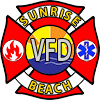Consider joining the SBVFD.
We have a lot of empty boots to fill, in many styles and sizes.
Just bring enthusiasm and a desire to serve your community – we’ll supply the rest. From fighting fires to supply and support to record keeping, we need you and have ways that you can help. No experience necessary.
Interested in volunteering? Let us contact you:
Three main types of response activities.
Active Responder
Being an Active Responder is for folks who have the desire (and receive the necessary training) to “gear up and go in” on many different types of incidents. This might mean manning the hoses and fighting structure or wildland fires, performing direct patient care on medical calls, or engaging in vehicle and other emergency rescue situations.
Supporting Responder
On fire and rescue calls Supporting Responders drive, staff, and operate apparatus like tenders and supply units, direct traffic, or provide communications and operational help to Incident Command. On medical calls they might take notes, handle supplies and equipment, help patient family members, or even provide CPR and first aid as directed.
Auxiliary Responder
It takes an awful lot of work and a variety of skills to keep the VFD ready perform its mission. Auxiliary Responders help with bookkeeping and reporting, vehicle and equipment checks, supplies and rehab during extended incidents, community relations and events, social media, and facilities maintenance. And that’s just to name a few.
